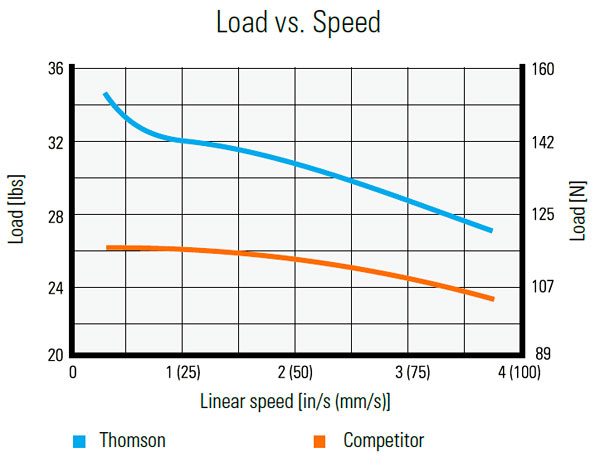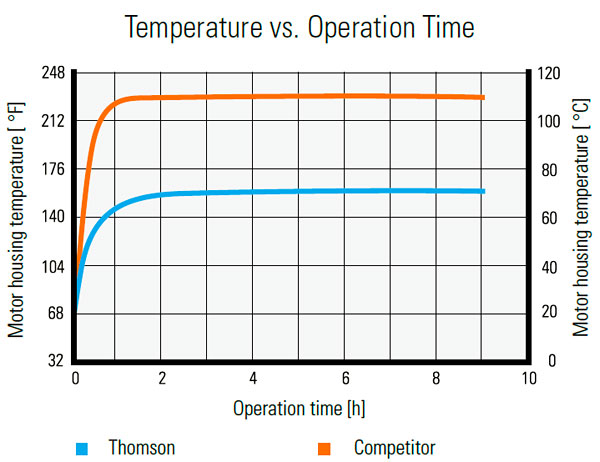Competitive Analysis Comparison
Taper-Lock Comparison Click to Open
The Thomson Taper-Lock Advantage
Fixing the motor to the lead screw usually requires a coupling assembly (A), a counter-bore press fit (B) or a hollow shaft press fit (C). The assembly process may also entail the use of adhesives or welding but the bottom line is that all these solutions make it difficult or impossible to change lead screws or perform maintenance. Thomson has solved this issue with our patent-pending Taper-Lock coupling (D) that only requires a single retention fastener. With this new design you can easily perform maintenance or lead screw replacement.

Coupling assembly (A)
- space demanding
- reduces stroke
- increases system inertia
- requires radial support bearing
- may reduce accuracy

Counter-bore press fit (B)
- reduces stroke
- requires machining
- difficult to assemble
- run-out and alignment issues
- difficult to replace quickly

Hollow shaft press fit (C)
- requires machining
- difficult to assemble
- run-out and alignment issues
- difficult to replace quickly

Thomson Taper-Lock (D)
- high accuracy
- requires no extra space
- easy to replace quickly
- easy assembly and alignment
Thrust Force Comparison Click to Open
Thrust Force Comparison – Thomson vs. Leading Competitor
Thomson optimized motors will result in up to a 30% increase in thrust over the competition. That means you will get a smaller and more efficient solution with the same power output.

The curves where generated with a 1.5 Amp / 2.33 V, 1.8° NEMA 17 single stack, rotating screw stepper motor. Test ran with a 0.9°, 24 VDC chopper drive and a 4-2516 lead screw at an ambient temperature of 20 °C.
Temperature Comparison Click to Open
Temperature Comparison – Thomson vs. Leading Competitor
Thomson offers more efficient motors where more torque can be output with less heat loss – meaning that our motors can be operated with higher power input while maintaining lower heat generation.

The curves where generated with a 1.5 Amp / 2.33 V, 1.8° NEMA 17 single stack, rotating screw stepper motor. Test ran with a 0.9°, 24 VDC chopper drive and a 4-2516 lead screw at an ambient temperature of 20 °C.



